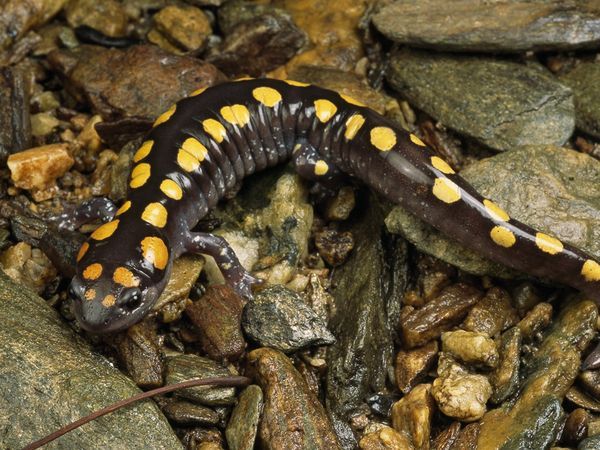
Some
animals, such as particular sponge and coral species, use
photosynthesis to produce energy. But only recently have scientists
confirmed that a vertebrate--an animal with a backbone--does so as well.
When spotted salamanders lay eggs, algae colonize the egg clusters and
provide the means for photosynthesis:
A close examination of the eggs revealed that some of the algae were living within the embryos themselves, and in some cases were actually inside embryonic cells. That suggested the embryos weren't just taking oxygen from the algae: they might be taking glucose too. In other words, the algae were acting as internal power stations, generating fuel for the salamanders.To find out if that was happening, Erin Graham of Temple University in Philadelphia, Pennsylvania and colleagues incubated salamander eggs in water containing radioactive carbon-14. Algae take up the isotope in the form of carbon dioxide, producing radioactive glucose.Graham found that the embryos became mildly radioactive – unless kept in the dark. That showed that the embryos could only take in the carbon-14 via photosynthesis in the algae.The algae do not seem to be essential to the embryos, but they are very helpful: embryos deprived of algae struggle. "Their survival rate is much lower and their growth is slowed," says Graham.

No comments:
Post a Comment